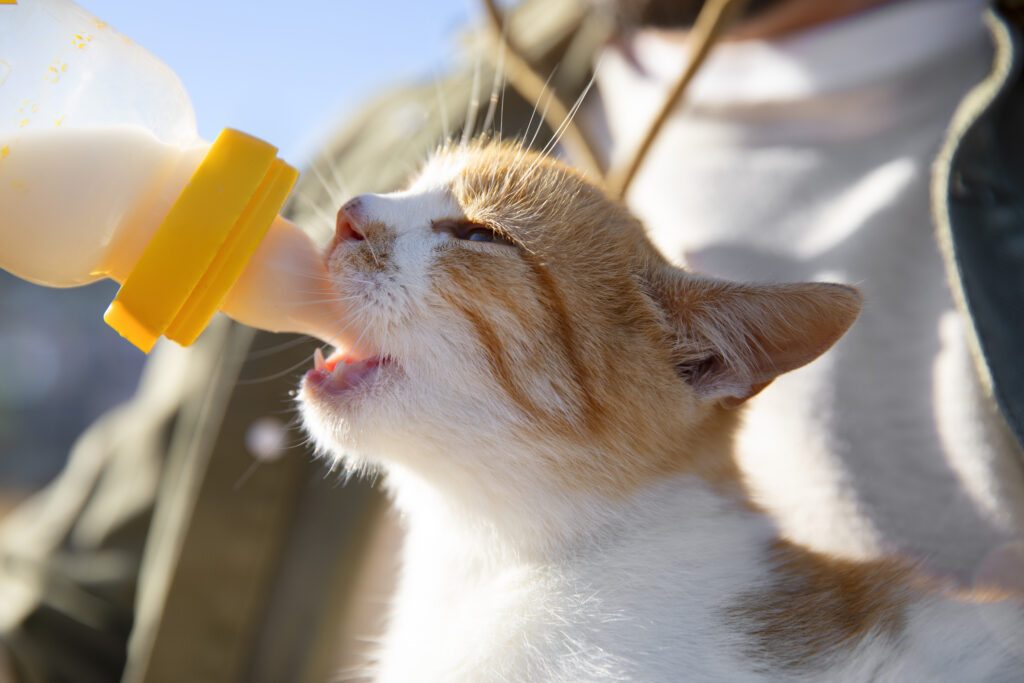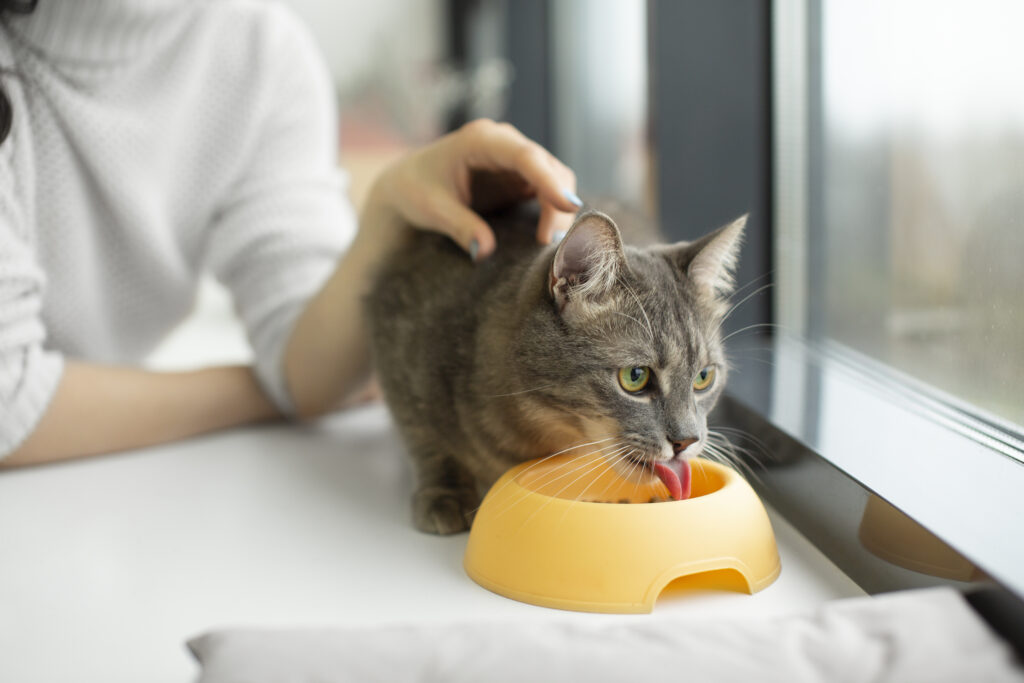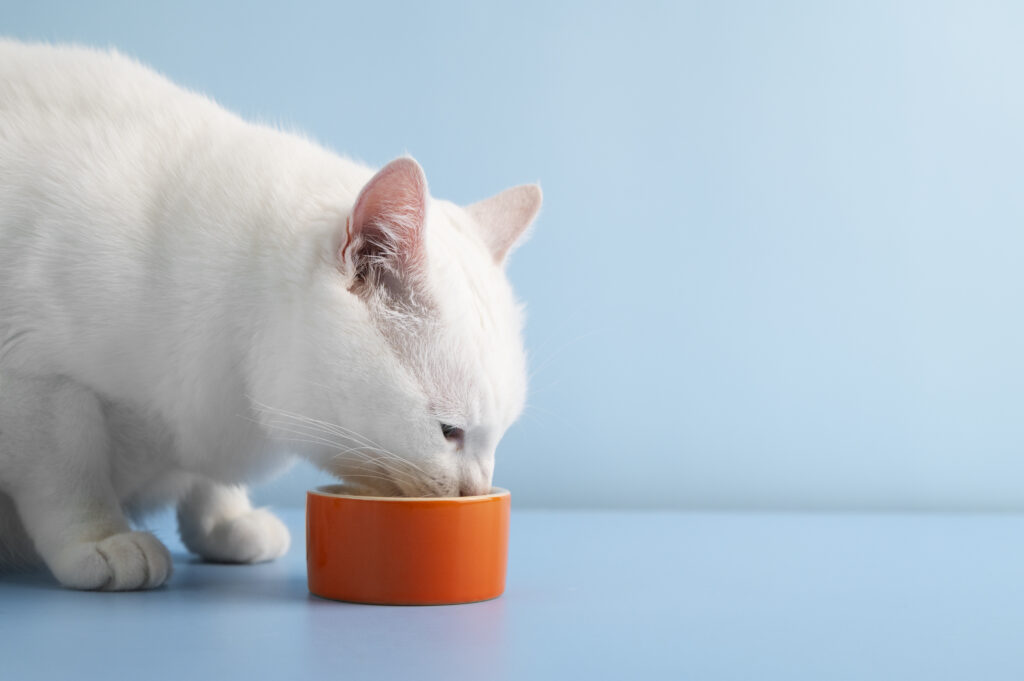Introduction
Have you noticed your feline friend making more frequent trips to the water bowl lately? A cat drinking a lot of water might not seem concerning at first glance – after all, staying hydrated is important for all living beings. However, when your cat drinking water frequently becomes a noticeable change in behavior, it’s worth paying attention to.
As cat owners, we develop an intuitive understanding of our pets’ normal habits. When your cat drinking more water than usual disrupts this familiar pattern, your instincts are right to be alert. Excessive thirst, medically known as polydipsia, can be a telltale sign that something isn’t quite right with your furry companion’s health.
In this comprehensive guide, we’ll explore the four most shocking reasons why your cat drinking a lot of water might be cause for concern. We’ll dive into the science behind feline hydration, help you understand what’s normal versus problematic, and provide actionable advice for ensuring your cat’s wellbeing.
Whether you’ve noticed your cat drinking water all the time or are simply being proactive about feline health, this article will equip you with the knowledge to make informed decisions about your pet’s care. Let’s dive into the surprising world of feline hydration and uncover what your cat’s drinking habits might be trying to tell you.

Understanding Normal Water Intake for Cats
Before we dive into potential health concerns, it’s essential to establish what constitutes normal water intake for cats. On average, a healthy cat should consume approximately 3.5 to 4.5 ounces of water per 5 pounds of body weight daily. This means a typical 10-pound cat needs about 7-9 ounces of water each day to maintain proper hydration.
However, several factors can influence how much water your cat naturally requires:
- Diet type: Cats eating dry food typically drink more water than those on wet food diets, as canned food already contains about 70-80% moisture.
- Activity level: More active cats generally need more hydration.
- Environmental temperature: Cats tend to drink more during warmer months.
- Age: Senior cats may have different hydration needs than younger felines.
It’s worth noting that cats evolved as desert animals and historically obtained much of their moisture from prey. This evolutionary background means they typically have a low thirst drive compared to dogs or humans, making any sudden increase in water consumption particularly noteworthy.
When monitoring your cat’s drinking habits, look for consistency rather than exact measurements. If your cat drinking water constantly represents a clear change from their established pattern, it warrants attention regardless of whether the absolute amount falls within average ranges.
Signs that your cat drinking a lot of water might be abnormal include:
- Empty water bowls when this wasn’t previously common
- Your cat seeking out unusual water sources (faucets, toilet bowls, etc.)
- Spending noticeably more time at the water bowl
- Cat drinking water and lethargic behavior occurring together
- Your cat drinking water all the time even during usual rest periods
Now that we understand the baseline, let’s explore the four shocking reasons that might explain why your cat is drinking a lot of water and what these conditions mean for your feline friend’s health.
Shocking Reason #1: Diabetes Mellitus in Cats
One of the most common and concerning reasons for a cat drinking a lot of water is feline diabetes mellitus. This metabolic disorder affects approximately 1 in 200 cats and occurs when the body either doesn’t produce enough insulin or cannot effectively use the insulin it does produce.
Understanding the Connection
When a cat develops diabetes, glucose (sugar) cannot properly enter the cells to provide energy. Instead, sugar accumulates in the bloodstream, triggering the kidneys to work overtime filtering and excreting this excess glucose through urine. This process, called osmotic diuresis, leads to increased urination and subsequent thirst as the body attempts to replace lost fluids.
Key Diabetes in Cats Symptoms to Watch For
If diabetes is behind your cat drinking a lot of water and peeing frequently, you’ll likely notice these additional warning signs:
- Weight loss despite normal or even increased appetite
- Lethargy or decreased activity
- Unkempt appearance or reduced grooming
- Sweet-smelling breath (in advanced cases)
- Cat drinking water due to illness may appear otherwise healthy initially
Certain cats face higher risks of developing diabetes. Those most vulnerable include:
- Overweight or obese cats
- Male cats (slightly higher predisposition)
- Middle-aged and older cats (typically 6+ years)
- Certain breeds (Burmese cats have genetic predisposition)
- Cats with sedentary lifestyles
Diagnosis and Treatment
If you suspect diabetes is causing your cat drinking water frequently, veterinary attention is essential. Diagnosis typically involves blood and urine tests to measure glucose levels and detect sugar in the urine.
Treatment usually includes:
- Insulin therapy (administered via injection)
- Dietary changes (typically low-carbohydrate diets)
- Weight management if obesity is a factor
- Regular monitoring of blood glucose levels
- Consistent exercise regimen
The good news is that with proper management, many diabetic cats can lead normal, healthy lives. Some may even experience diabetic remission with early intervention and appropriate care. However, ignoring these symptoms can lead to dangerous complications, including diabetic ketoacidosis, a potentially life-threatening condition.
When caught early, diabetes treatment can effectively reduce your cat drinking excessive water and restore normal hydration patterns.
Shocking Reason #2: Kidney Disease in Cats

Perhaps the most common serious health concern behind a cat drinking a lot of water is chronic kidney disease (CKD). This progressive condition affects approximately 1-3% of all cats, with the incidence dramatically increasing among older felines – up to 30-50% of cats over 15 years have some degree of kidney dysfunction.
The Kidney-Thirst Connection
The kidneys play a vital role in maintaining proper hydration by concentrating urine and conserving water. As kidney function deteriorates, cats lose the ability to concentrate their urine effectively. This results in the production of more dilute urine and increased urination volume.
To compensate for this fluid loss, cats instinctively increase their water intake. This is why you might notice your cat drinking water constantly as an early indication of kidney issues.
Recognizing Kidney Disease in Cats Symptoms
Beyond observing your cat drinking a lot of water, watch for these additional kidney disease in cats symptoms:
- Increased urination (often large clumps in the litter box)
- Weight loss and poor body condition
- Decreased appetite or food pickiness
- Vomiting or nausea (particularly after eating)
- Bad breath with a urine-like odor
- Constipation or changes in bowel habits
- Cat drinking water and losing weight simultaneously
It’s important to note that many cats don’t show obvious external symptoms until the disease has progressed significantly. In fact, cats may lose up to 75% of kidney function before clinical signs become apparent, which is why regular veterinary checkups are crucial for early detection.
Risk Factors and Management
Several factors can increase a cat’s risk of developing kidney disease:
- Advanced age (most common in cats over 7 years)
- Certain breeds (including Maine Coons, Abyssinians, Siamese)
- History of urinary tract problems
- Dental disease (bacteria can spread to kidneys)
- Previous kidney infections or injuries
- Exposure to toxins (certain plants, medications, antifreeze)
While kidney disease cannot be cured, proper management can significantly slow progression and improve quality of life. Treatment typically includes:
- Specialized renal diets (phosphorus-restricted, moderate protein)
- Increased access to fresh water to support hydration
- Medication to manage complications (high blood pressure, excessive stomach acid)
- Subcutaneous fluid therapy in more advanced cases
- Phosphate binders to reduce mineral buildup
With appropriate care, many cats with kidney disease can maintain a good quality of life for months or even years after diagnosis. Early detection is key, so if your cat exhibits excessive thirst in cats coupled with other symptoms, prompt veterinary consultation is essential.
Shocking Reason #3: Hyperthyroidism – A Common Culprit
Another significant reason your cat drinking a lot of water might be cause for concern is hyperthyroidism. This condition occurs when the thyroid gland produces excessive amounts of thyroid hormone, essentially sending your cat’s metabolism into overdrive.
The Metabolic Connection
Thyroid hormones regulate metabolism in all body systems. When these hormones are overproduced, they accelerate virtually all bodily functions. This hypermetabolic state creates increased energy demands and generates excessive heat, leading to increased thirst as the body attempts to cool itself and process the accelerated metabolism’s byproducts.
This explains why hyperthyroidism might be behind your cat drinking water all the time – their body is working harder and faster, requiring more fluid to maintain function.
Identifying Hyperthyroidism in Your Cat
If your cat drinking more water than usual is due to hyperthyroidism, you’ll likely notice several distinctive signs:
- Weight loss despite increased appetite (sometimes ravenous hunger)
- Hyperactivity, restlessness, or irritability
- Increased water intake and urination
- Vomiting or diarrhea
- Poor coat condition
- Increased vocalization, especially at night
- Cat drinking water due to illness may seem energetic rather than lethargic
In some cases, cats with hyperthyroidism may also exhibit:
- Rapid heart rate (tachycardia)
- Heart murmurs or rhythm abnormalities
- Panting or difficulty breathing
- Tremors or muscle weakness
Demographics and Risk Factors
Hyperthyroidism typically affects middle-aged to older cats, with most cases diagnosed in cats over 10 years old. Unlike some conditions with breed predispositions, hyperthyroidism affects all cat breeds relatively equally. However, it’s slightly more common in females than males.
Environmental factors may play a role in development, with some research suggesting connections to:
- Certain food packaging components
- Flame retardants in household furnishings
- Commercial cat food ingredients
Diagnosis and Treatment Options
If hyperthyroidism is suspected as the cause of your cat drinking excessive water, your veterinarian will likely recommend blood tests to measure thyroid hormone levels. Additional tests may be needed to evaluate heart function and rule out concurrent kidney disease, which is common in the same age group.
Treatment options include:
- Medication (Methimazole/Tapazole): Daily oral medication to reduce thyroid hormone production.
- Radioactive Iodine Therapy: A highly effective, one-time treatment that destroys abnormal thyroid tissue.
- Surgical Removal: Thyroidectomy to remove the affected gland(s).
- Prescription Diet: Iodine-restricted food that limits the thyroid’s ability to produce hormones.
With proper treatment, the prognosis for hyperthyroid cats is generally excellent. Once hormone levels normalize, you should notice your cat drinking water frequently behavior returns to normal patterns. However, untreated hyperthyroidism can lead to serious heart complications and other systemic problems, making early detection crucial.
Shocking Reason #4: Urinary Tract Issues and Infections
The fourth alarming reason behind your cat drinking a lot of water relates to various urinary tract problems, including infections (UTIs), inflammation, and more complex conditions like feline lower urinary tract disease (FLUTD).
Understanding the Urinary-Thirst Connection
When a cat experiences urinary tract inflammation or infection, several mechanisms can trigger increased thirst:
- Pain and discomfort during urination may lead to behavioral changes in water consumption
- Inflammatory mediators can influence thirst centers in the brain
- Frequent small urinations may lead to relative dehydration
- Bacterial toxins in UTIs can impact kidney function and concentrate/dilute mechanisms
This is why UTIs and other urinary conditions might explain your cat drinking water frequently – their body is responding to disruptions in normal urinary tract function.
Recognizing Urinary Problems in Cats

Beyond noticing your cat drinking a lot of water and peeing abnormally, watch for these telling signs of urinary tract issues:
- Frequent urination attempts, often producing small amounts
- Straining in the litter box (which can be mistaken for constipation)
- Blood in the urine (pink or red-tinged)
- Urinating outside the litter box, especially on cool surfaces like tile or bathtubs
- Excessive genital licking or attention to the urinary area
- Crying or vocalization during urination attempts
- Cat drinking water and lethargic behavior occurring together
In severe cases, especially in male cats, urinary issues can progress to blockages, where the cat cannot urinate at all. This is a life-threatening emergency requiring immediate veterinary attention. Signs include multiple unproductive attempts to urinate, obvious distress, vomiting, and eventually collapse.
Risk Factors for Feline Urinary Issues
Several factors increase a cat’s likelihood of developing urinary tract problems:
- Sex: Males are more prone to urethral blockages due to their narrower urethras
- Weight: Overweight cats have higher risk
- Diet: Certain mineral compositions in food can contribute to crystal formation
- Water intake: Cats with chronically low water consumption
- Stress: Environmental stressors can trigger inflammation
- Litter box habits: Infrequent litter box cleaning leading to urine retention
Treatment Approaches
Treatment for urinary issues varies based on the specific diagnosis:
- Bacterial UTIs require appropriate antibiotics
- Inflammatory conditions may benefit from anti-inflammatories and pain management
- Crystal/stone formation typically requires dietary modification
- Stress-related FLUTD might need environmental enrichment and sometimes anti-anxiety medication
- Blockages require emergency catheterization and supportive care
Prevention and Long-term Management
To prevent recurrence of urinary issues that cause your cat drinking water all the time, consider these strategies:
- Increase moisture intake: Transition to wet food or add water to dry food
- Provide clean, fresh water: Consider water fountains which many cats prefer
- Multiple water sources: Place water bowls throughout your home
- Reduce stress: Maintain consistent routines and provide enrichment
- Clean litter boxes regularly: Provide one more box than the number of cats in your home
- Regular veterinary check-ups: Monitor urinary health before problems develop
By addressing urinary tract issues promptly, you can resolve the underlying cause of your cat drinking excessive water and restore normal hydration patterns.
Other Potential Causes for Excessive Thirst in Cats
While we’ve covered the four most shocking reasons for a cat drinking a lot of water, several other conditions can potentially cause increased thirst. These deserve mention as they may be relevant to your cat’s situation:
1. Hypercalcemia (High Blood Calcium)
Elevated calcium levels can damage kidney function and trigger increased thirst. This condition may result from:
- Certain cancers
- Parathyroid gland issues
- Vitamin D toxicity
2. Liver Disease
The liver plays a crucial role in metabolism and toxin removal. When compromised, it can lead to:
- Hormone imbalances affecting thirst
- Toxin accumulation affecting brain thirst centers
- Metabolic changes requiring increased fluid processing
3. Medication Side Effects
Certain medications commonly prescribed to cats can increase thirst, including:
- Corticosteroids (prednisolone, dexamethasone)
- Diuretics
- Some heart medications
- Certain anticonvulsants
4. Psychogenic Polydipsia
Though rare in cats, this psychological condition involves drinking excessive amounts of water without physiological cause. It may relate to:
- Anxiety or compulsive behaviors
- Previous episode of dehydration creating persistent drinking habit
- Response to stress or environmental changes
5. Diet-Related Causes
Your cat’s food may contribute to increased water consumption:
- High-salt diets
- Dry food exclusively (compared to moisture-rich wet food)
- Certain protein sources requiring more metabolic water
- Food additives that may increase thirst
If you’ve ruled out the major health concerns but your cat drinking water constantly remains an issue, discuss these possibilities with your veterinarian.
When to See a Veterinarian
Given the potential serious health implications we’ve discussed, it’s important to know when a cat drinking a lot of water warrants veterinary attention. Here are guidelines for when to seek professional care:
Immediate Emergency Care Needed If:
- Your cat is attempting to urinate but producing nothing
- Your cat appears in pain, is vocalizing, or restless
- Cat drinking water and lethargic to the point of collapse
- Vomiting accompanies excessive thirst and inability to keep water down
- Why does my cat drink a lot of water and vomit persistently within 24 hours
Schedule a Veterinary Visit Within 24-48 Hours If:
- Your cat drinking more water than usual has persisted for more than 2-3 days
- Increased thirst is accompanied by any other behavioral changes
- You’ve noticed cat drinking a lot of water and peeing outside the litter box
- Any weight loss accompanies the increased thirst
- Your cat’s water consumption has roughly doubled from normal
What to Expect at the Veterinary Visit
To diagnose the cause of feline polydipsia (excessive thirst), your veterinarian will likely:
- Take a thorough history about changes in drinking, urination, appetite, and behavior
- Perform a comprehensive physical examination
- Recommend blood tests to check organ function, blood sugar, electrolytes, and thyroid levels
- Request urinalysis to evaluate urine concentration and check for infection, glucose, protein, or crystals
- Possibly recommend imaging (X-rays or ultrasound) depending on suspected causes
Bring any information that might help, including:
- Approximate daily water consumption (if known)
- Timeline of when changes were first noticed
- Any other symptoms, no matter how minor they seem
- List of current medications or supplements
- Food brand and type (dry, wet, or combination)
Early intervention offers the best prognosis for most conditions that cause excessive thirst in cats.
Cat Hydration Tips: Promoting Healthy Drinking Habits
Whether addressing a medical condition or simply promoting good hydration for your cat, these cat hydration tips can help ensure your feline friend maintains appropriate water intake:
1. Water Bowl Optimization
- Use wide, shallow bowls that don’t touch your cat’s whiskers
- Choose ceramic, glass, or stainless steel (many cats dislike plastic)
- Clean water bowls daily to prevent bacterial growth
- Place bowls away from food and litter boxes
- Maintain multiple water stations throughout your home
2. Water Quality and Presentation
- Provide fresh water daily (or more frequently)
- Consider filtered water if your tap water has strong odors
- Try slightly cool water rather than room temperature
- Some cats prefer running water—pet fountains can encourage drinking
- Ice cubes in water can intrigue playful cats
3. Diet Modifications for Hydration
- Incorporate wet food into your cat’s diet (contains ~70-80% moisture)
- Add water to dry food if transitioning fully to wet food isn’t feasible
- Consider broths designed specifically for cats (without onion, garlic, or salt)
- Discuss therapeutic diets with your veterinarian if treating specific conditions
4. Environmental Enrichment
- Provide dripping faucets for supervised drinking sessions
- Create “water games” with droplets on surfaces for playful lapping
- Consider water fountains designed specifically for pets
- Rotate water sources to stimulate interest
5. Monitoring Techniques
- Mark water bowl levels with a waterproof pen
- Measure water added to bowls each day
- Use timed cameras to observe drinking patterns
- Check for appropriate urination in the litter box
- Watch for signs of dehydration in cats (see next section)
By implementing these strategies, you can support your cat’s optimal hydration, whether you’re addressing a cat drinking water constantly due to medical issues or simply promoting good health.
Recognizing Signs of Dehydration in Cats
While we’ve focused on excessive drinking, it’s equally important to recognize when your cat isn’t getting enough fluids. Dehydration can quickly become dangerous, especially in cats with underlying conditions that cause water loss.
How to Check for Dehydration at Home
Watch for these signs of dehydration in cats:
- Skin elasticity test: Gently pinch the skin over your cat’s shoulders. It should spring back immediately when released. If it remains “tented” or returns slowly, dehydration is likely.
- Gum assessment: Press your finger against your cat’s gums until they turn white, then remove. The pink color should return immediately. Delayed color return (capillary refill time) suggests dehydration.
- Sunken eyes: Compare your cat’s eye appearance to normal. Dehydrated cats often have eyes that appear recessed.
- Lethargy: Dehydration commonly causes weakness and reduced activity.
- Dry mouth: Tacky or dry gums instead of slick, moist tissue indicates fluid loss.
- Panting: Unlike dogs, cats rarely pant unless severely overheated or distressed.
- Constipation: Decreased water content in the digestive tract can cause hard stools.
Emergency Warning Signs
Seek immediate veterinary care if you notice these severe dehydration indicators:
- Extreme lethargy or collapse
- Inability to stand or walk normally
- Complete food refusal for more than 24 hours
- No urination for more than 24 hours
- Vomiting while also showing other dehydration signs
Dehydration is particularly dangerous for cats with conditions like kidney disease or diabetes, as it can rapidly accelerate organ damage. If your cat drinking a lot of water suddenly stops consuming fluids entirely, consider this an emergency situation requiring prompt veterinary attention.
Conclusion: Understanding Your Cat’s Hydration Needs
When you notice your cat drinking a lot of water, it’s natural to feel concerned. As we’ve explored, increased thirst can indeed signal several serious health conditions that require veterinary attention. From diabetes to kidney disease, hyperthyroidism to urinary tract issues, that increased water bowl activity might be your first clue to an underlying problem requiring treatment.
However, it’s also important to approach changes in drinking behavior with a measured perspective. Some variation in water consumption is normal with seasonal changes, diet adjustments, or increased activity. The key is recognizing when your cat drinking water frequently represents a significant deviation from their established patterns.
By understanding normal feline hydration needs and monitoring your cat’s habits, you become your pet’s first line of defense against developing health problems. Early detection of conditions like cat drinking water due to illness can make an enormous difference in treatment success and quality of life.
Remember these key takeaways:
- Establish a baseline: Know what’s normal for your individual cat’s drinking habits.
- Monitor patterns: Note gradual increases in thirst that persist over several days.
- Look for accompanying symptoms: Cat drinking water and lethargic behavior together is more concerning than increased thirst alone.
- Consult professionals: When in doubt, veterinary evaluation provides peace of mind and potentially life-saving early intervention.
- Support hydration: Regardless of health status, proper hydration supports overall wellbeing.
At PetsPump, we believe informed cat owners make the best advocates for their feline friends’ health. By understanding the potential causes behind your cat drinking excessive water, you’re equipped to make timely, educated decisions about their care.
Has your cat experienced unusual thirst patterns? What was your experience addressing the underlying cause? Share your story in the comments to help other cat owners recognize and respond to this important health indicator.
FAQs About Cats Drinking Excessive Water
Q: How much water should a normal cat drink daily?
A: The average cat needs approximately 3.5-4.5 ounces of water per 5 pounds of body weight daily. However, cats on wet food diets typically drink less water than those eating dry food because of the moisture content in their food.
Q: What’s the difference between normal thirst and problematic excessive drinking?
A: Cat drinking a lot of water becomes concerning when it represents a significant change from their established pattern, especially when accompanied by other symptoms like increased urination, weight loss, or appetite changes.
Q: Could seasonal changes cause my cat to drink more water?
A: Yes, cats typically drink more during warmer months due to temperature regulation needs. However, dramatic increases in thirst regardless of season warrant attention.
Q: My cat has always drunk a lot of water. Should I be concerned?
A: Some cats naturally have higher water intake than others. If this has been your cat’s consistent habit and no other symptoms are present, it may simply be their normal pattern. However, a veterinary check can provide reassurance.
Q: Does dry food cause excessive thirst in cats?
A: Dry food diets do require cats to consume more water compared to wet food diets. However, truly excessive thirst beyond what’s needed to compensate for dry food suggests potential health issues.
Q: How can I accurately measure my cat’s water intake?
A: Use a measuring cup to add a specific amount of water to your cat’s bowl each morning, then measure what remains after 24 hours. This calculation becomes more complex in multi-cat households or if outdoor water sources are accessible.
Q: Is my cat drinking from the toilet a sign of excessive thirst?
A: Toilet drinking can indicate increased thirst, but some cats simply prefer cool, frequently refreshed water. Monitor overall drinking behavior across all water sources to assess total intake.
Q: Can stress or anxiety cause increased water consumption in cats?
A: While primarily associated with physical conditions, stress can occasionally contribute to changes in drinking habits, either directly or by triggering conditions like idiopathic cystitis.
Q: Are certain cat breeds more prone to conditions causing excessive thirst?
A: Yes, some breeds have predispositions to conditions like diabetes (Burmese) and kidney disease (Maine Coons, Persians, Abyssinians), potentially leading to increased water consumption.
Q: How quickly should I seek veterinary care for a cat drinking excessive water?
A: If the increased thirst persists for more than 2-3 days, is accompanied by other symptoms, or represents a dramatic change in behavior, veterinary consultation within 48 hours is advisable. For symptoms of urinary blockage, seek emergency care immediately.
References and Resources
- Cornell University College of Veterinary Medicine. “Feline Diabetes.” https://www.vet.cornell.edu/departments-centers-and-institutes/cornell-feline-health-center/health-information/feline-health-topics/feline-diabetes
- International Cat Care. “Chronic Kidney Disease in Cats.” https://icatcare.org/advice/chronic-kidney-disease/
- American Association of Feline Practitioners. “Feline Hyperthyroidism.” https://catvets.com/guidelines/practice-guidelines/hyperthyroidism-guidelines
- Journal of Feline Medicine and Surgery. “Feline Lower Urinary Tract Disease.” https://journals.sagepub.com/doi/full/10.1177/1098612X19860435
- American Veterinary Medical Association. “Pet Hydration Awareness.” https://www.avma.org/resources/pet-owners/petcare/pet-hydration
- PetsPump. “Understanding Common Cat Health Problems.” https://petspump.com/common-cat-health-problems/
- PetsPump. “Cat Nutrition Guide: What Your Feline Friend Needs.” https://petspump.com/cat-nutrition-guide/
- PetsPump. “Signs of Illness in Cats: When to Visit the Vet.” https://petspump.com/cat-illness-signs/
Disclaimer: This article is for informational purposes only and is not a substitute for professional veterinary advice. If you notice changes in your cat’s drinking habits or any other concerning symptoms, please consult with a qualified veterinarian promptly.
About the Author: This article was written by the pet health experts at PetsPump, dedicated to providing research-based information to help you better care for your feline companions.






